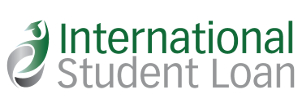An ever-growing number of U.S. students are taking up opportunities to study abroad according to the Institute of International Education. Year after year the numbers just keep rising, and they cover U.S. students enrolled full-time for their entire degree abroad, those taking a year or semester abroad, and U.S. students that do other related activities and short courses. If you’d like to join them but worry about funding this experience of a lifetime, we’ve got the answers to all your questions.

341,751 U.S. students studied abroad for academic credit last year according to the most recent study by The Institute of International Education, an increase of 2.7% over the previous year. A further 38,401 U.S. students participated in non-credit work, internships, volunteering, and research abroad. Over 50% of U.S. students studying abroad traveled to Europe, with the United Kingdom, Italy, Spain, and France the most popular countries. China and Australia were the most popular non-European destinations.

While the experience is invaluable, with tuition, books, transportation, and living expenses you may find that you need additional funding to make the dream a reality. That’s why we have developed a comparison tool of lenders that provide loans for study abroad students. We have made the whole process easy, quick and simple, comparing those lenders that will help you realize your dream of studying abroad!

If you’ve decided that you want to spend the semester, year or your entire degree abroad but you’re worried you won’t be eligible for educational loans simply because you’re studying abroad- we’re happy to let you know that that’s not the case. U.S. citizens and eligible non-us citizens who are enrolled in an eligible school and study abroad program, often have access to loans, and in this article we are going to discuss your options.
Study Abroad in figures
341,751
U.S. students abroad
187,534
Traveled to Europe
36,945
studied in Italy
32,411
studied in Spain
39,403
studied in the UK
39,403
studied in the UK
What types of loans are available?
You have two main options- federal and private loans. Federal loans are granted through the U.S. government, while private loans are granted through a private institution such as a bank or other approved lender. Although we specialize in private loans, we will also cover federal loans because they can be a great way to fund your education - and this is where you should turn before you look at private loans.
You should first fill out a FAFSA, the Free Application for Federal Student Aid, to see what aid you are eligible for. Completing the FAFSA application will let you know if you’re eligible for these loans, grants or work-study funds.
U.S. citizens and eligible non-us citizens can complete the FAFSA. If you’re not sure if you qualify as an eligible non-U.S. citizens, go to the FAFSA website to double check your situation. There are multiple individuals who are eligible as non-us citizens, so please check. There are a few different types and your personal situation will determine which you are eligible to receive. We’re going to take a moment to explain the differences.
Types of Federal Loans
Direct Subsidized Loan: For eligible undergraduate students who demonstrate financial need to help cover the costs of higher education at a college or career school.
Direct Unsubsidized Loan: Open to eligible undergraduate, graduate, and professional students. Eligibility is not based on financial need.
Direct PLU.S. Loans: For graduate or professional students and parents of dependent undergraduate students to help pay for education expenses not covered by other financial aid. Eligibility is not based on financial need, but a credit check is required. If your parents want to help you pay for your education and need a loan- the PLU.S. loan is a good option.
Perkins Loan Program: No longer available. If you participated in this program you can learn more about managing your repayment by contacting your school or lender directly.
What are the benefits of these loans?
Benefits include:
- Low, fixed interest rates (meaning less you have to pay back)
- Income-based repayment plans (meaning your payments will be parallel to what your income allows you to afford)
- Cancellation for certain employment (in some instances, you can request a cancellation of the repayment for this type of loan. For example if you get a job in a public service position or are a teacher at a low-income school)
- Deferment options (this is a temporary delay in which you don’t have to repay your loan- both principal and interest.)
For more information on these loan options see studentaid.gov, and you can complete the FAFSA here.
After you’ve explored your options of government-sponsored aid you might not have as much aid available to you as need. Maybe you missed the FAFSA deadline, or maybe you decided not to complete the FAFSA at all. In any of these situations, you still have the option to explore private study abroad loans. Private loans are just as they sound- a loan that is through a private lender, like a bank. Private loans are great if you’re trying to fill the gap in the last bit of aid that you need - you can borrow up to the total cost of your education, minus any other aid you’ll receive.
Benefits of private loans:
- Borrow up to the total cost of attendance, less other aid
- Flexible repayment terms
- Thousands of approved schools
You can use our comparison tool to see what lenders are available to provide you with funding at your school.

Am I Eligible?
All students must be a U.S. citizen or U.S. permanent resident who will be studying outside their home country through an approved U.S. school either at the undergraduate or graduate level. The student must receive credit at their home college or university. If you are not sure if your school is eligible, see the complete list of eligible schools. Your school must be accredited by an agency recognized by the United States Secretary of Education and be eligible to participate in federal student aid programs.
Students who are U.S. citizens or U.S. permanent residents directly enrolled in an eligible international school should look for a foreign enrolled loan.

International Students
If you are an international student looking to study in the U.S., please visit our international student page to find a suitable program. We do have programs for international students attending schools in the U.S. or Canada - students studying in their home country or in other destinations are not currently eligible.
Study Abroad Student Resources
Find Your Student Loan
Find my loanStudy Abroad Loan Frequently Asked Questions
Cosigners
Do I Need a Cosigner?
While a cosigner is not required, applying with a U.S. cosigner may make it easier to obtain a loan and can also increase the chances of getting a better interest rate. A cosigner may join a student’s loan application. If approved, they are legally obligated to repay the loan if the borrower fails to pay.
What if I don't have a cosigner?
Students who do not have a cosigner must have good credit and a long credit history. How this is assessed will vary from lender to lender.
What if my cosigner is a non-U.S. citizen?
The cosigner must be a U.S. citizen or U.S. permanent resident who has lived in the U.S. for the past two years. They must have a valid social security number and pass a credit check.
School Eligibility
Do all foreign schools offer federal financial aid?
If you are not sure if your school is eligible, see the complete list of eligible schools. Your school must be accredited by an agency recognized by the United States Secretary of Education and be eligible to participate in federal student aid programs.
Visit Federal Student Aid for International Study to find eligible schools and further information.
If my school doesn’t participate in the federal program, can I apply for a private student loan instead?
No. Schools must be approved by the Department of Education to offer the private student loans discussed above.
My school is not on the list, can I still get a loan?
If you will be studying abroad and need a loan to finance your studies overseas, you must receive credit at your home school. Your sending school must also appear on our eligible school list. If not, then we unfortunately do not have a loan program for you. We recommend contacting your school directly as they may know if there are any loan programs available to their study abroad students.
What if no lenders appear on my comparison tool?
Unfortunately if there are no lenders that appear after you do the comparison tool, then we do not have a loan program for the school. Our best advice is to contact your school, as they should know if there are any loan programs available to their study abroad students.
Understanding Study Abroad Loans
What Can I Use My Loan For?
Loans can be used for education-related expenses including tuition, books, fees, insurance, transportation, room and board, and other school-related expenses. You can borrow the total cost of your education minus any other financial aid you have received. Your school will certify the total amount you are able to borrow.
To determine your maximum loan amount, or what can be included in your loan, you will need to speak to your school’s financial aid office. After you apply and receive approval for you and your cosigner, your school must certify the amount of the loan.
How Much Interest Will I Pay?
When you take out a loan through a lender, you will be responsible for paying back the amount of money you borrowed (called the principal) plus an additional amount charged by the lender for the loan (called interest). With a variable rate loan the interest rate is calculated based on an index plus a margin that will add an additional percentage interest rate depending on your cosigner’s creditworthiness. The two most common indexes used for student loans are the Prime Rate and SOFR (Secured Overnight Financing Rate):
- Prime Interest Rate - This index is determined by the federal funds rate which is set by the U.S. Federal Reserve. This is the rate in which banks lend to one another and in many cases the interest rate which commercial banks charge their most creditworthy clients.
- SOFR - the Secured Overnight Financing Rate is the new benchmark interest rate that is used to determine loan interest rates. It is an overnight rate based on transactions secured by U.S. Treasury securities and administered by the Federal Reserve Bank of New York. The rate reflects the cost of borrowing cash overnight for banks and financial institutions, which helps set loan interest rates for consumers and businesses.
When evaluating the loan, the lender will clarify which index the plan uses. Then, there will be an additional margin that will be added to this index based on the borrower’s individual criteria, including the cosigner’s credit history. Based on their creditworthiness, an additional interest rate will be added to the index which will be the total interest rate you owe. This will appear on your final loan paperwork as SOFR + 2.8% (for illustrative purposes only). When your application is approved, your specific margin will be disclosed to you. At that point you can accept or refuse the loan.
When Will I Have to Repay the Loan?
Repayment will depend on the loan option you choose. This is an important consideration since most students cannot work while they studying overseas and others may not want to have a job while completing their degree. Because of this, students will need to consider the cost of each monthly payment, when payments will begin, and how long students may be able to defer paying back the loan. The repayment period typically ranges from 10-25 years, however the larger the loan, the longer the loan repayment period. There are standard repayment plan options depending on the loan you select:
- Full Deferral - Students are able to defer payment of the interest and principal until 6 months after graduation as long as full-time status is maintained. Students can defer payments for a maximum of 4 years consecutively which is the typical length of a degree
- Interest Only - International students only pay the interest while in school, up to 4 consecutive years, and can defer the principal until 45 days after graduation or when students drop their course load to part-time.
- Immediate Repayment - Payments on both interest and principal are due immediately once the loan has been issued and dispersed.
Are there application deadlines?
There are a few deadlines to complete the FAFSA: the federal deadline which is June 30th, the local deadline which will vary from state to state, and then your school might have a deadline also. So you will need to make sure you know and meet all three deadlines!
You may apply for a private loan at any time. There is no deadline. However, to ensure that you have the aid ready to use when you need it-know that the initial approval takes between 2 and 6 weeks.
If I obtained a loan last year, can I get another loan again this year?
Yes. You can reapply each academic term for a loan.
When will my student loan be disbursed?
Disbursement dates are set by the school in accordance with federal regulations. The first disbursement date on a federal loan cannot be any earlier than 30 days before the first day of the loan period and schools will apply this principle to private loans, too.
Are there any regulations about cashing my student loan checks for study abroad?
If you are studying overseas, you should check current federal regulations affecting the cashing of student loan checks abroad. You can check the regulations at FinCEN.gov.





